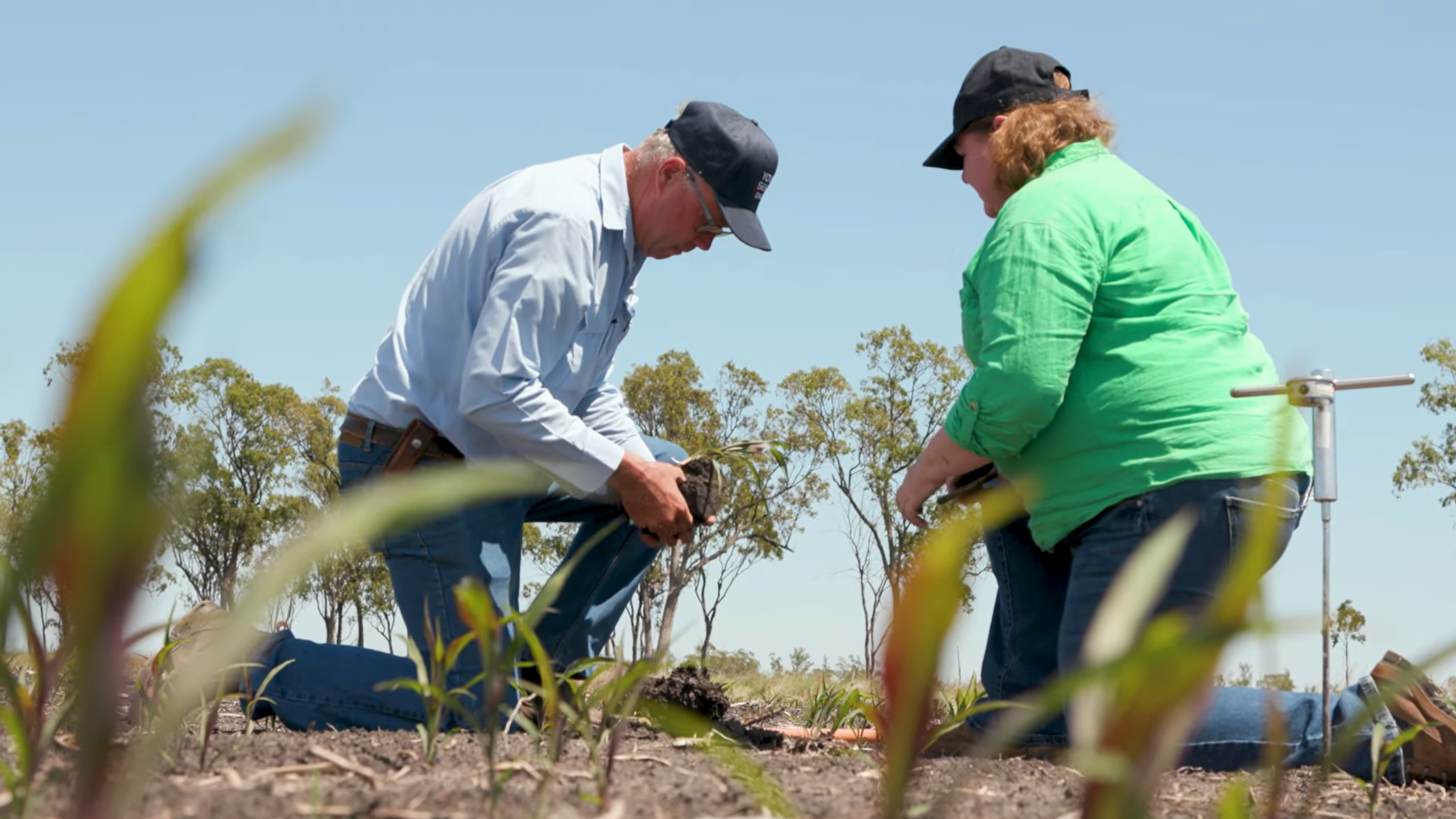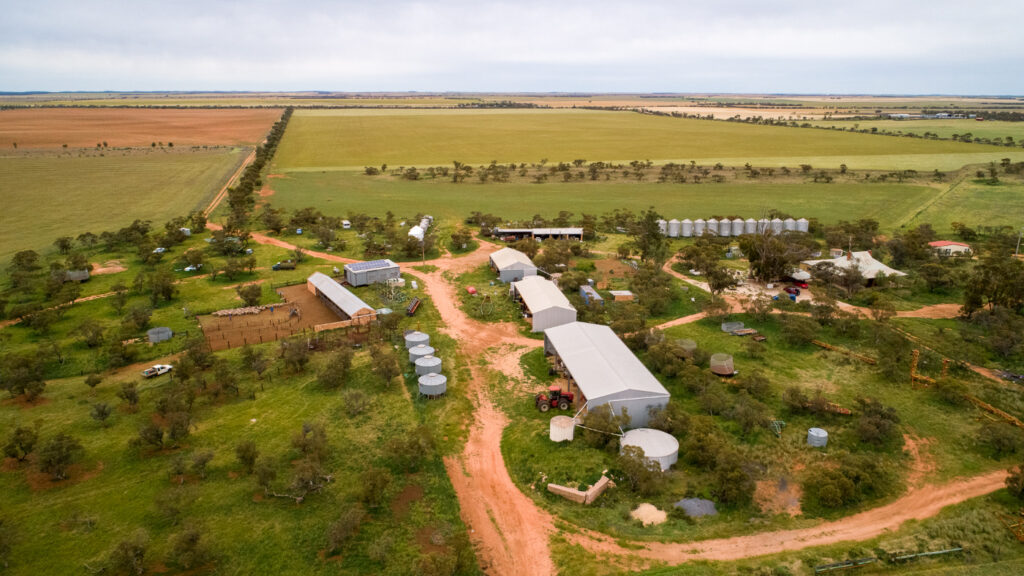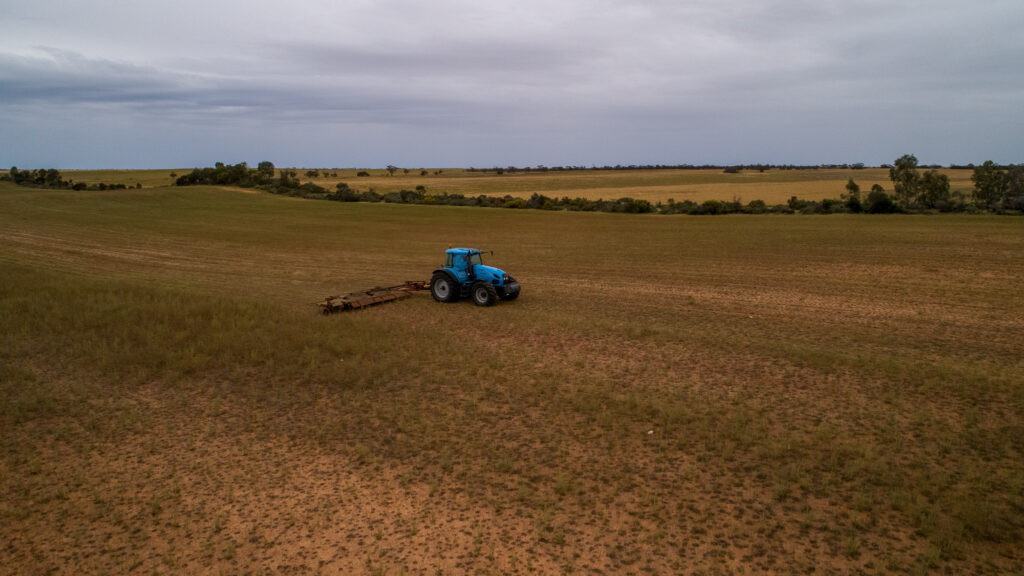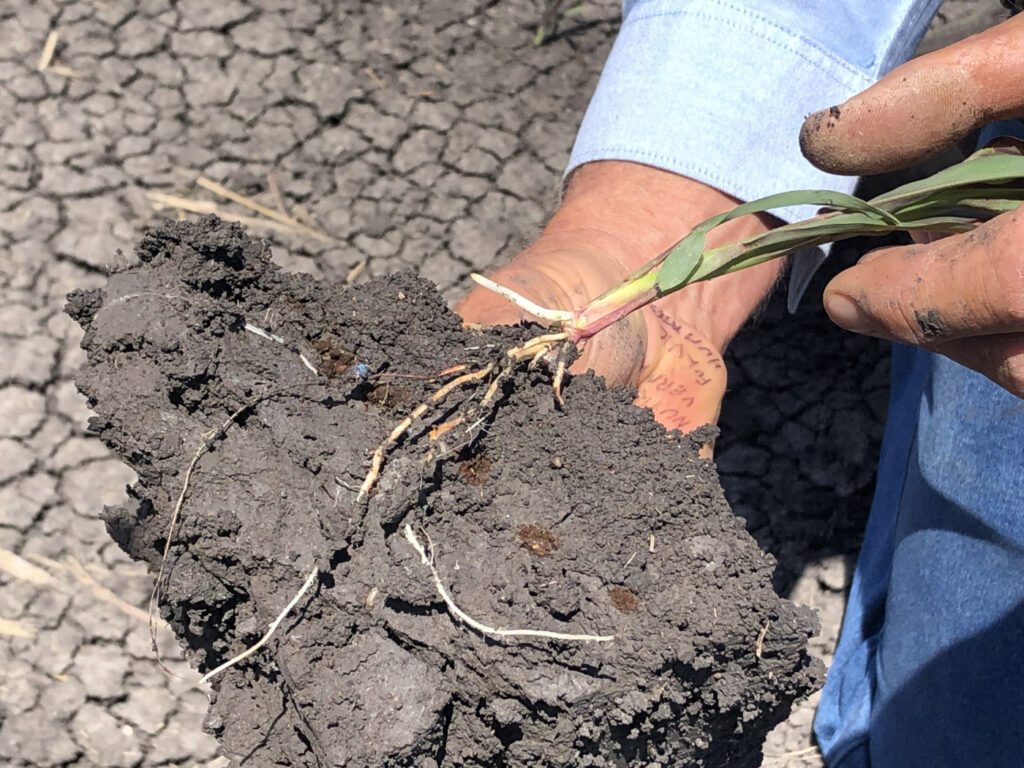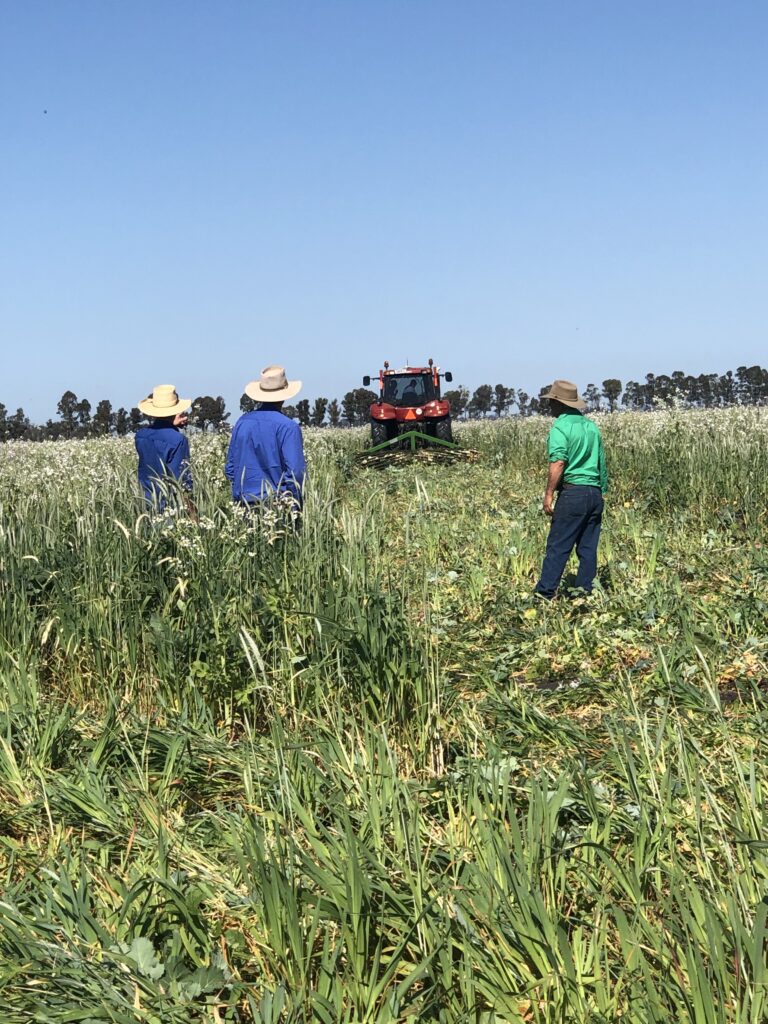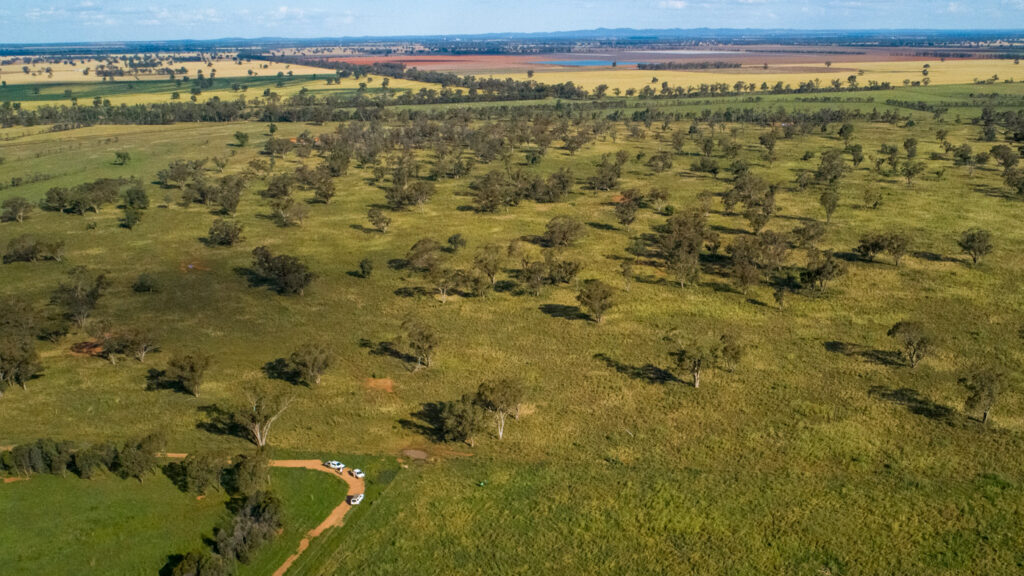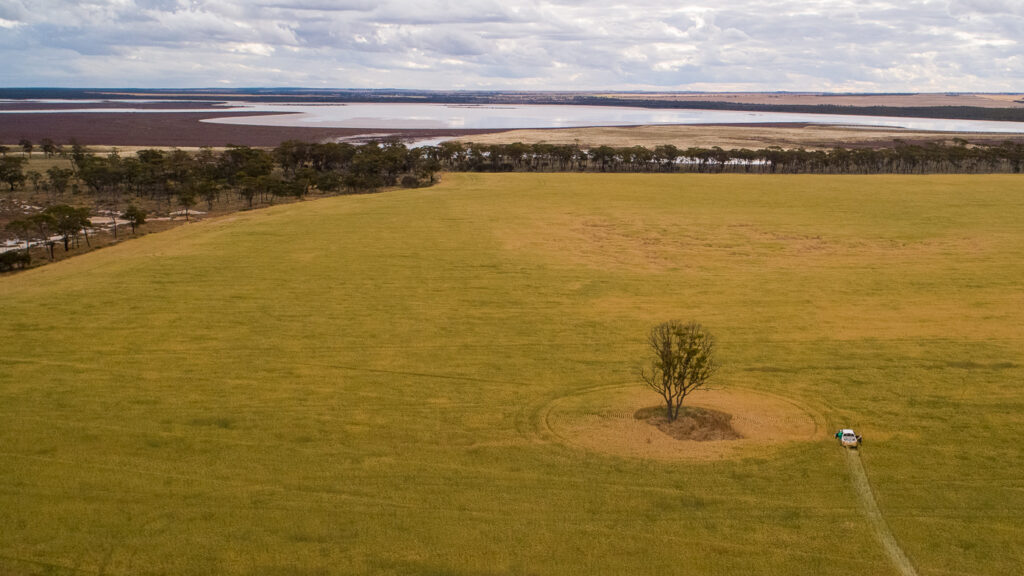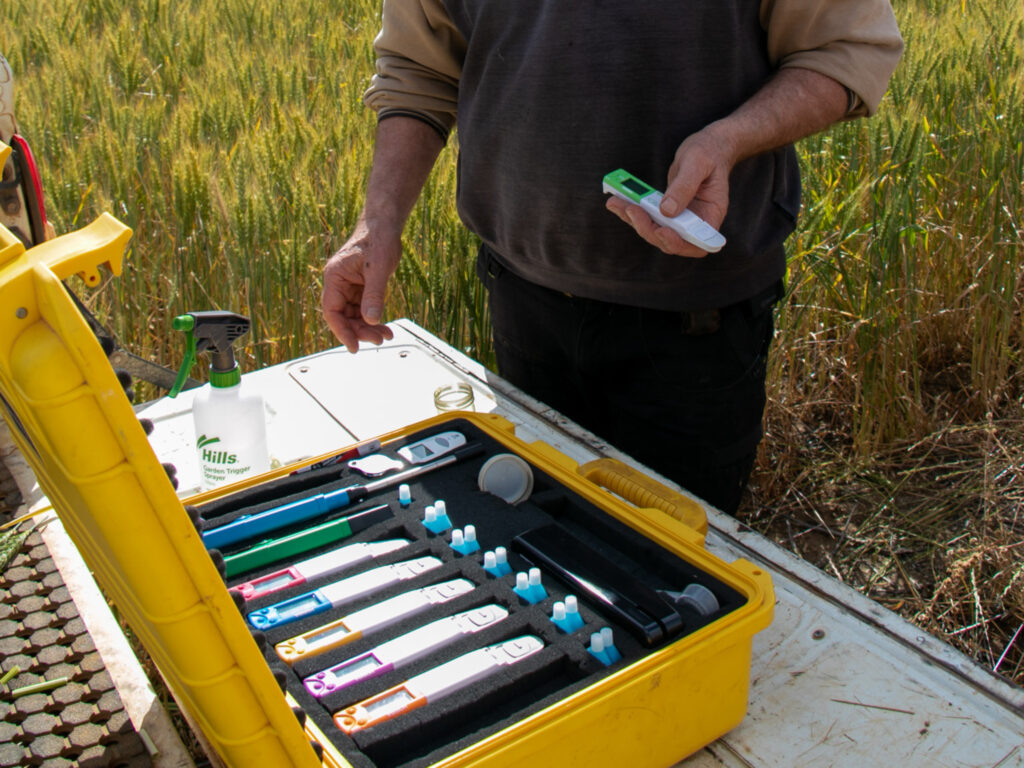Working with bio-amendments: Insights from Australian cropping case studies
Supporting soil health
This article explores how Australian croppers are using bio-amendments. It builds on a previous article where we looked at what the soil-plant microbiome needs to function effectively and how bio-amendments can support better functionality. Our four case study farms, Border Park Organics (SA), Young Seeds (QLD), Walma (WA), and Willydah (NSW) are all operating in different contexts, across different climatic regions and distinct soil types.
At each farm, bio-amendments are incorporated into farming operations season-to-season, from foliars, seed dressings and composts, to larger integrated management decisions; these practices are closely observed year-to-year because the placement, timing and frequency of bio-amendments all influence outcomes.
Why bio-amendments? Supporting the soil-plant microbiome
In the previous article, we explained how different practices stimulate different parts of the soil-plant microbiome to influence plant growth.
Specific practices can directly impact plant health, or work indirectly by improving soil conditions. We use the simple metaphor of workers, fuel and housing informed by Dr Neil Wilson’s work, as these describe essential building blocks for thriving underground and above-ground communities. We also find John Kempf’s insights about the intimate connections between plants, photosynthesis and soil health very useful. In simple terms, healthy plants create healthy soil because photosynthesis drives complexity and productivity. As Kempf says, ‘Plant photosynthesis is the engine that drives the generation (and regeneration) of soil health, not the other way around.’
Farmers use bio-amendments to stimulate different parts of the microbiome (see Table 1 with specific examples developed by Soils for Life Agroecologist Sarah Fea). Dr Neil Wilson distinguishes between direct and indirect use of bio-amendments that can shape these microbiomes, as follows:
- Direct augmentation or inoculants refers to the direct application of additional workers or living microbes
- Indirect stimulation refers to the provision of organic materials that provide essential services to the soil microbial herd, such as fuel (bio-stimulants) and housing (organic materials and management practices).
Table 1. Direct and indirect bio-amendments for enabling soil-plant microbiomes.*#
| Direct augmentation | Indirect stimulation | |
| INOCULANTS (Workers) |
BIO STIMULANTS (Fuel for workers) |
MANAGEMENT (Housing for workers) |
| Compost and Vermi-compost (can be bacterial or fungal dominant)
Bacteria
Fungus
Earthworms Dung beetles |
Vermi Liquids Decomposed plant, animal
Ferments Soil Conditioners from diverse Dung Grazing animals’ saliva Biodynamic preps |
Compost and Vermi-compost Biochar Practices
|
*One good way of comparing products is to look at the number of colony-forming units, or CFUs, per unit of measure. The greater the number, the better. #Always be mindful of where you source these products and their risk of contamination.
Exploring how croppers work with bio-amendments in different regions
Our case studies show some of the different approaches and techniques for distributing and applying bio-amendments. The choice of approach depends on the enterprise mix, the type of soil and annual rainfall, as well as the farmer’s financial situation, expertise, and goals.
Equipment and facilities are another factor, as these are generally a significant cost in cropping. Some farmers prioritise investing in advanced equipment and technology, while others focus on using simple and effective methods that suit their needs and budget.
Each approach has its advantages and disadvantages, and farmers need to evaluate what suits their circumstances.
Because every farming context has unique challenges and opportunities, the purpose of this article is not a comparative analysis. Instead, it offers a snapshot of bio-amendment practices on these four diverse farms over recent years (2018-2022). For a more in-depth and complete picture of farming operations and history, check out our four cropping case studies on the Soils for Life website.
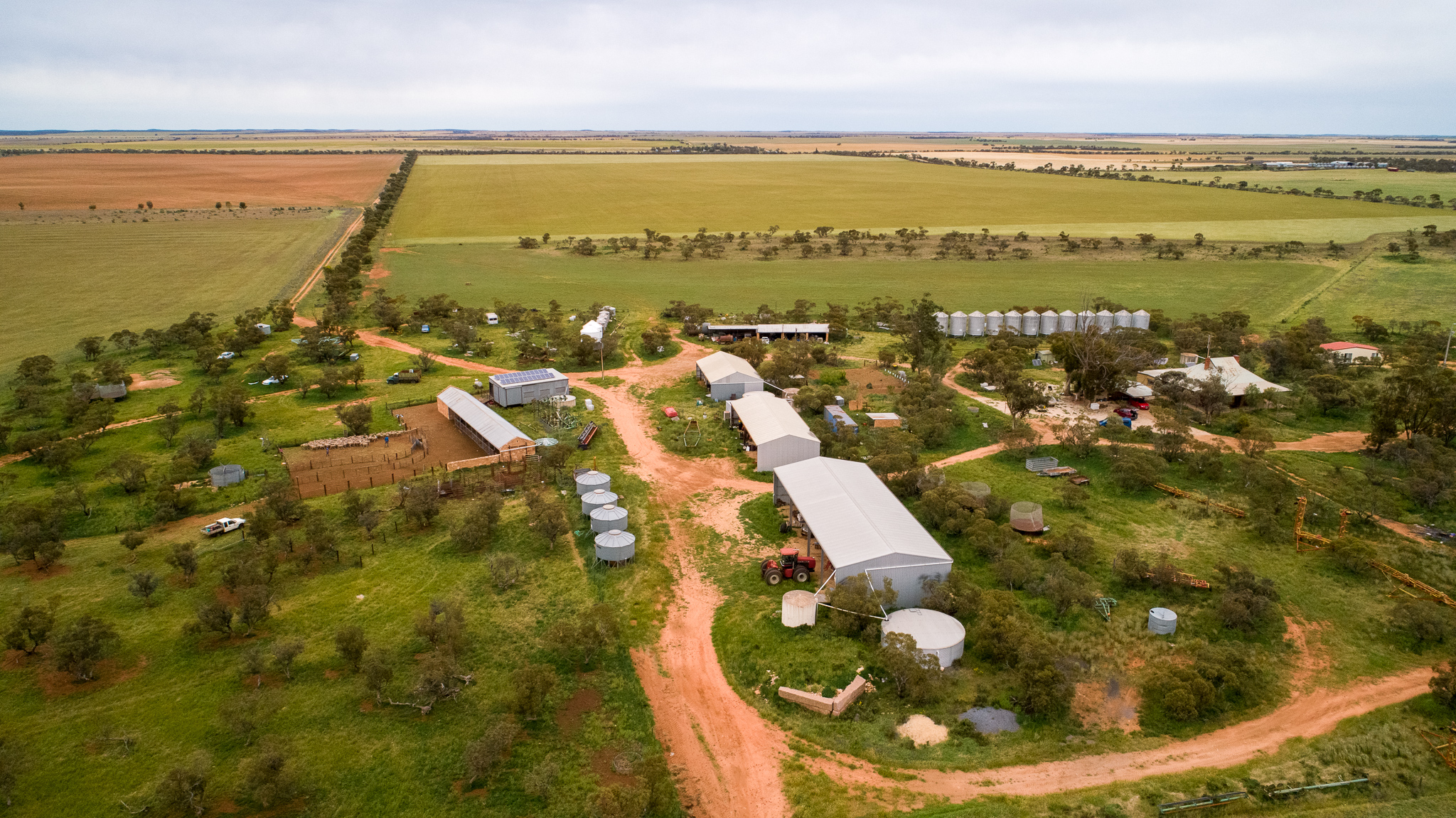
South Australia
Border Park Organics
Located in south-east Australia, Border Park Organics is a mixed-enterprise organic farm on 2390 ha, with annual rainfall of 260-280 mm. The McIntosh family began making practice changes and working with bio-amendments in 2014. Some of the key soil and landscape factors in the region are low rainfall, low soil fertility, low soil water retention, and subsoil limitations including salinity and sodicity. The dominant soil types are light textured (sands to sandy loams), and well drained, so the efficient use of available water is critical.
The McIntoshs have utilised a range of direct augmentation and indirect stimulation, with bio-amendment products and home-made inputs, including composts, liquids and seed coatings to support plant growth and soil health (see Table 1). In 2018, they began working with liquids and formulating foliar sprays, informed by their growing understanding of how plant roots interact with the soil through biology. They trialled worm juice followed by pelletised worm castings and while experimenting with worm-based products, the McIntoshs’ began brewing their own bio-stimulant liquid inoculants. The liquid was a broad-spectrum soil microbe, including plant symbionts and inoculates mixed in an aerated, temperature-controlled brewing tank. Josh was thinking of broad-spectrum liquids as a way to introduce food for soil biology (rather than chemistry for plant nutrition), and they used this liquid both as a seed-coating and in-furrow liquid injection.
An example of management-based bio-amendments (indirect stimulation), the McIntoshs began slashing paddocks to build soil and support microbial breakdown. They slash volunteer non-palatable perennials to promote more growth and use them as a soil builder. This adds a layer of mulch on the soil surface as a way to feed soil microbes. Josh found that the slashed material can oxidise too much and not assimilate with soil as much as would be ideal, so he began using a spray application of a microbial based solution combined with a spiked disc chain to assist in this. Another example of management decisions relates to the increased facilitation of living ground cover across each year through the modification of the timing and choice of equipment. For example, shifting from a disc plough to a disc chain conserved moisture after tillage better than any other machine.
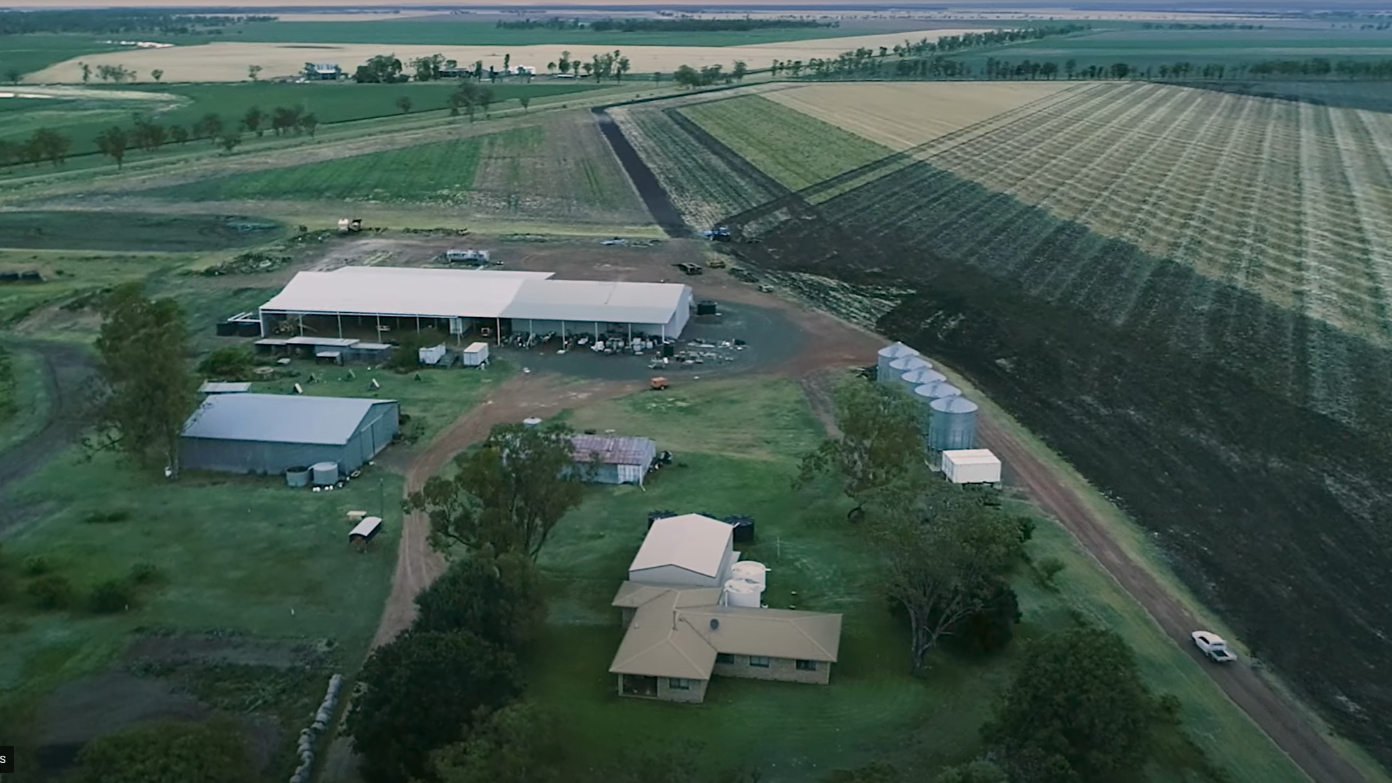
Queensland
Young Seeds
Located in south-east Queensland on the Central Darling Downs, Young Seeds is a 872 ha cropping-only enterprise, with annual rainfall of 598 mm. Cracking clays are the main cropping soils and generally speaking, the soils at Young Seeds are highly valued (high soil fertility and large water holding capacity) and easily worked. However, there has been soil degradation due to intensive cropping over several decades and the workability of the soils is highly dependent on the climatic conditions. Russell Young began working with bio-amendments at Young Seeds in 2017.
Russell Young began experimenting based on knowledge he gained from a Soil Food Web course. Between 2018 and 2022, he trialled a range of soil health products and approaches to improve soil biology and increase nitrogen levels and utilisation efficiencies. He applied liquids, including: fish hydrolysate, liquid seaweed and kelp products to feed soil biology; and sugar and carbon source (molasses) to contribute to soil biology and better rhizosheath structure. Russell applied solids, such as pelletised worm castings or composted custom blends to provide biologically activated, readily available nutrients for microbes and plants. He combined these pellets, humic granules or liquid carbon sources (e.g. molasses) with urea to stabilise the nitrogen molecules by attaching carbon molecules. Russell also experimented with the addition of fulvic acid and acidic bio-stimulant products (commercially sourced) with reduced rates of glyphosate and other chemicals, which lowered the solution to a more ideal pH (2.9 pH for glyphosate), whilst still achieving desired control level of target plants.
Additionally, Russell explored integrated management options through the rotation of legumes to increase nitrogen in soil and companion crop plantings of medics with wheat and multispecies phases in rotation. Russell began multispecies trials on a 17 ha intensive regenerative zone, planting his first 12-way mix in 2021. He trialled using a hired roller crimper to terminate the multispecies, to leave a protective mulch layer, returning the valuable nutrients to the soil whilst his modified disc planter enabled him to plant the next crop directly through the mulch layer. The decomposition rate of these residues was aided by the foliar application of a soil conditioner. He has also used camera sensor equipment mounted on a high clearance sprayer to enable reductions in chemicals entering the landscape. High clearance sprays provide opportunities for more foliar applications of bio-amendments and targeted nutrition in crops, which Russell hopes will improve crop health and production, and in the longer term reduce weed pressure through increased soil health.
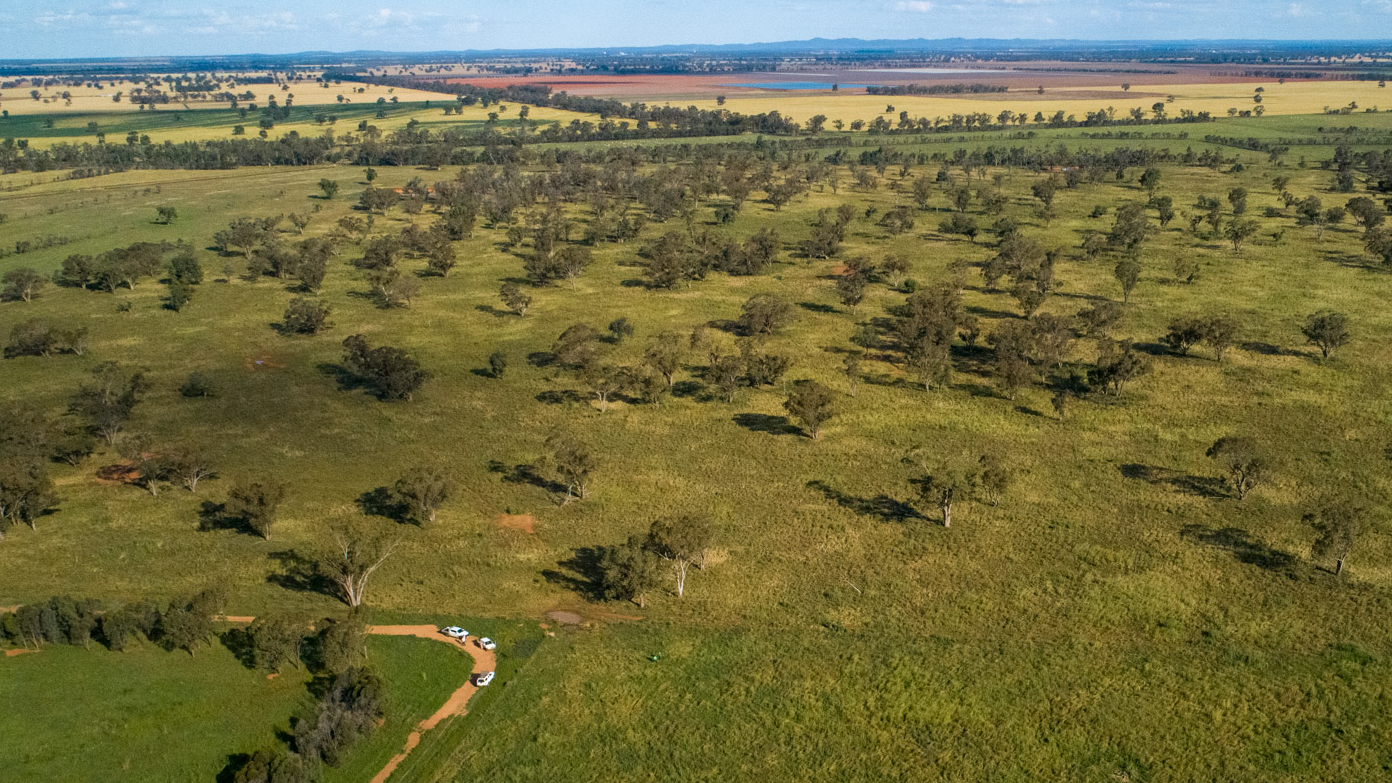
New South Wales
Willydah
Located in a semi-arid climate in western NSW on a 1400 ha property, Willydah is a mixed enterprise farm with annual rainfall of 554 mm. The soils are a combination of mostly texture-contrast podzolics (Chromosols), grey and brown clays (Vertosols), and uniform or gradational earths (Kandosols) of the Trangie soil group. The Maynards began focusing on alternative management practices in 1995, incorporating bio-amendments through integrated management with the goal to increase diversity at every level.
The Maynard family have wholeheartedly embraced integrated management, running a mixed enterprise of grazing and cropping, with cattle and self-replacing lambs. Early on, Bruce recognised how cropping, grazing and landscape diversification could work together as a whole in synergistic ways, with effective grazing becoming an important principle of his No-Kill Cropping approach. The animals, in eating and recycling plants, add nutrients back into the soil, and with mindful management aid in rehabilitating the grassland, increasing biodiversity, without heavy intervention. These management practices are examples of ‘indirect stimulation’ and are forms of effective bio-amendments within the farming system (see Table 1).
The Maynards plant wheat and oat crops into grassland, planting dry prior to the Autumn season rains coming. The system runs on a rotational cropping system ensuring enough country is available for animals to graze whilst crops mature. They have modified planting equipment, running a straight-running disc machine which sows seeds at 11.5 inch intervals aiming for one cm-deep and a half cm-wide disturbance, the seed is ‘the perfect seed-soil contact.’
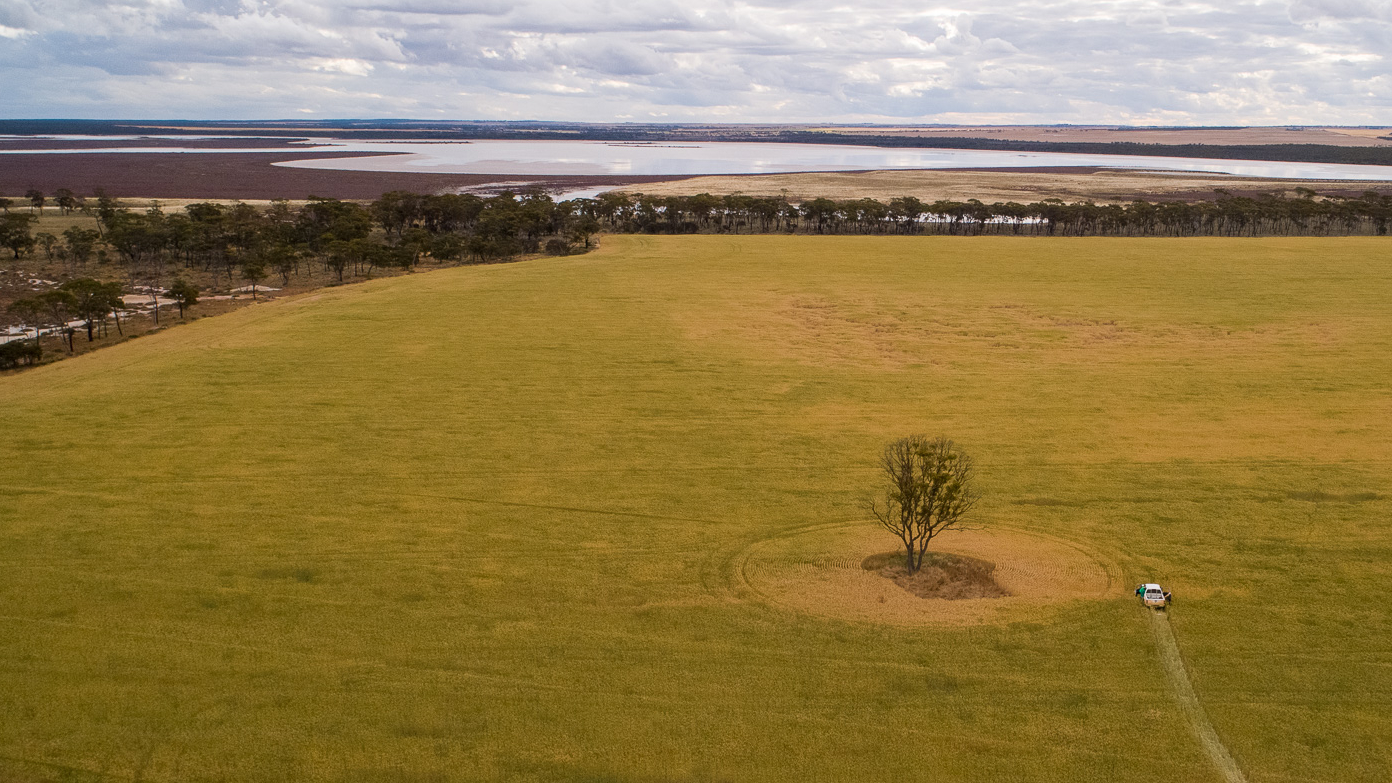
Western Australia
Walma
Located in south-west WA in the Lake King region, Walma is a cropping-only farm on 2500 ha, with annual rainfall of 320 mm. The farm is surrounded by salt lakes, with some areas high in sodium. Other areas have typically accelerated drying effects observed in the soils, where higher magnesium has caused the clay particles to disperse. The soils are a combination of Lakebank Morrell soils, Mallee clays, Gravel and Sandy gravel and Sand. The Hetheringtons began working with bio-amendments in the 1990s.
Now Rob Hetherington uses liquid bio-stimulants as seed dressings, liquid injects and foliars. He applies foliars mixed with amino acids, kelp, fulvic, fish hydrolysate and TM21 (on some paddocks). Monitoring crop health with his sap and brix meters, and modifying application compositions if required. He uses vermi liquid mixed with fish as a seed dressing; and uses a made-to-order mix of trace minerals with fulvic acid, humic acid, molasses, kelp and fish as a liquid inject. Rob has been companion cropping since the 1990s and more recently began experimenting with multispecies. In 2021, he put in a ‘seven way’ winter multispecies crop with a disc seeder, sowing seven kilos of wheat, barley, cereal rye, faba beans, lupins vetch, and a bit of canola, totalling 80 kilos for 275 hectares, and in 2022 they changed the recipe to include peas. In the past he has also incorporated green and brown manure crops in his rotations. Whilst he doesn’t currently use compost he would consider using a humified compost in the future.
Over time, Rob has decided that he likes to keep their bio-stimulant recipes and applications ‘simple’ now, using fish hydrolosate , fulvic acid, and kelp as a standard liquid whenever they spray a paddock. In terms of management decisions, the Hetheringtons have found that due to variable seasons at Walma, coupled with variations in the soil types they manage, that having both tyned and disc planters has meant they are able to respond accordingly and they’ve chosen to equip both with liquid injection systems.
The multiple benefits of bio-amendments
Bio-amendments can have a range of benefits, including a reduced need for synthetic inputs leading to reduced costs, improved soil health and biodiversity, and increased gross margins, along with reduced stress levels. The farmers profiled in this article report many of these benefits.
Russell Young (Young Seeds) and Rob Hetherington (Walma) still use some synthetic chemicals, however bio-amendments have helped both of them to reduce chemical use (fungicides and insecticides). Russell says he has already reduced glyphosate by 10% by adding a fulvic and acidic bio-stimulant product. He explains that if he drops the pH of the diluted glyphosate spray down to a pH of 2.9, and combines a little fulvic acid in the mix, it helps the plants absorb the chemical, thereby lowering overall chemical input.
For the McIntoshs bio-stimulants are an economical way to build soil and plant health and they have mostly transitioned away from using expensive off-the-shelf seed dressings. According to Josh McIntosh: “In terms of regeneration, the things that give us the best outcomes in terms of soil health are actually not expensive at all. Like cover crop seeds that we can source off farm and biology that we can multiply in our brewing tank. And then mineral seed dressing, they’re a few dollars a hectare […] It really is very economical.”
Rob Hetherington has also observed a positive shift in landscape health, with the appearance of earthworms across the farm which he has noticed since he started applying fish hydrolysate.
Bruce Maynard has observed that an increase in plant diversity through No-Kill Cropping (an example of ‘indirect stimulation’) has not only helped cycle nutrients back into the soil but has also increased the variety of food available for cattle and in turn improved cattle health. He has seen more customers willing to pay a premium for the taste, nutrition and ethics of animals raised in a low-stress environment (read more in an article on No-Kill Cropping here).
Making it work
These farmers’ experiences suggest one of the key success factors for using bio-amendments involves building and applying new knowledge about plant growth and the variety of ways that bio-amendments can support plant growth.
As Josh sees it, ‘having a basic understanding of a plant’s needs is the first necessary step to having an influence on growth and productivity through nutrients, minerals and bio-stimulants.’
Each of these farmers have also set clear priorities and goals, and use ongoing observation to understand the impacts of their management practices and decision making, and adapt accordingly.
For the Hetheringtons and McIntoshs, who are cropping in low-rainfall environments, timing is also key. Rob is now ‘more aware of actually getting it on at the right time, putting the right thing on.’
These croppers also share some personal attributes such as curiosity, attentiveness, learning from others who’ve come before, observing and being hungry for new knowledge.



